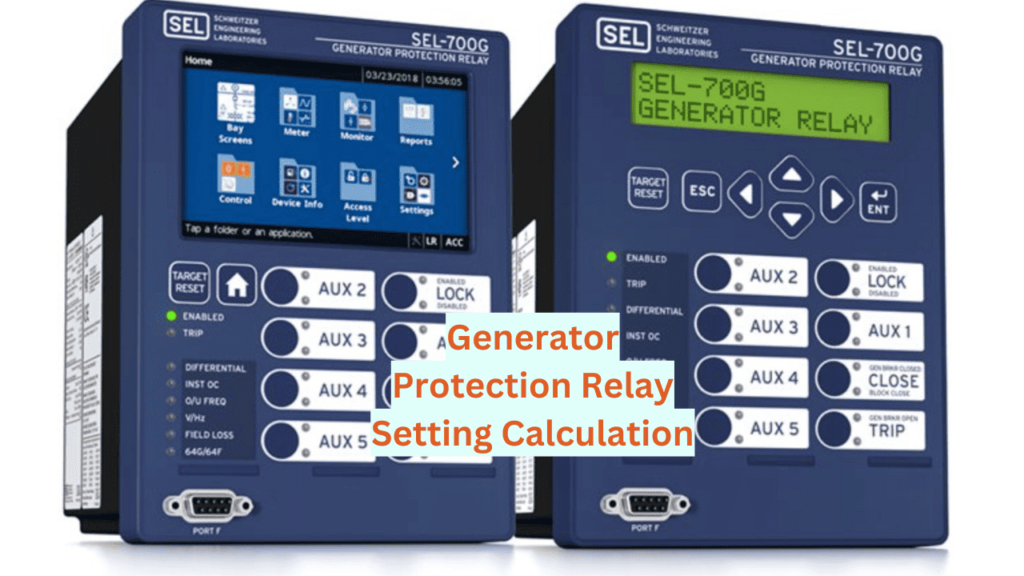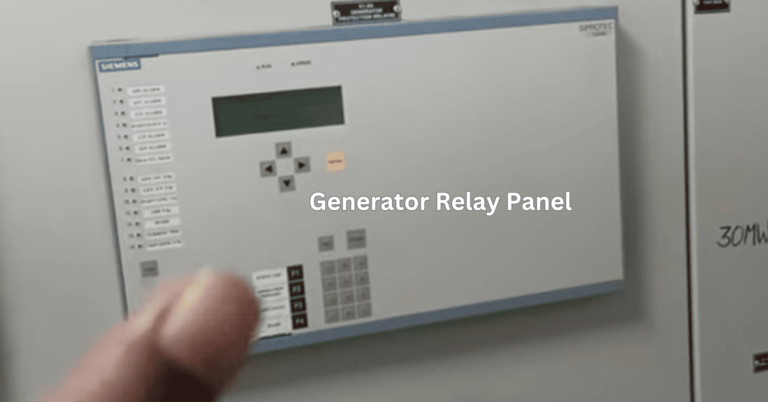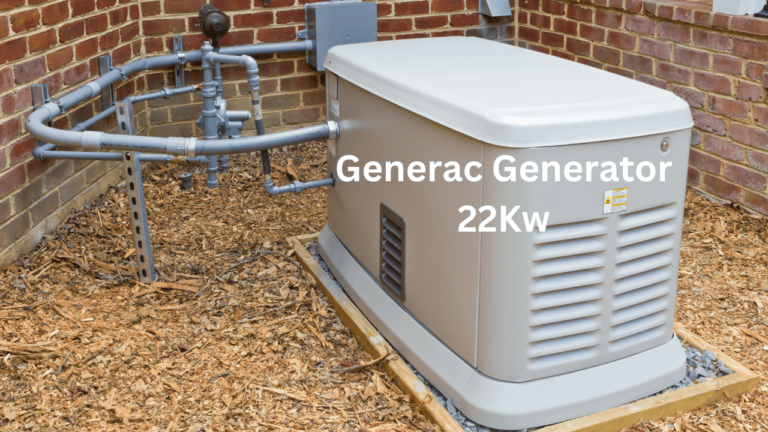Calculator for Generator Differential Protection Relay Setting Calculation:
Below is a simple calculator to help you determine the pickup current for a generator differential protection relay:
Generator Differential Protection Relay Setting Calculator
Generator Protection Relay Setting Calculation (with pdf and calculator)

Generator protection relay settings are crucial for safeguarding power generation equipment and ensuring an uninterrupted power supply. In this guide, we'll delve into the intricacies of generator protection relay settings, discussing their importance, calculation methods, and the relays commonly used for generator protection.
Why Generator Protection Relay Settings Matter:
Generator protection relay settings are essential for preventing equipment damage, minimizing downtime, and ensuring personnel safety. These relays monitor various parameters such as voltage, current, frequency, and temperature to detect faults and initiate protective actions promptly.
Understanding Generator Protection Relays:
Several types of relays are used for generator protection, including:
Differential Protection Relay:
Monitors current imbalances between the generator's windings, detecting internal faults.
Overcurrent Protection Relay:
Trips the generator offline in case of excessive current flow, preventing damage.
Overvoltage/Undervoltage Protection Relay:
Guards against voltage fluctuations that could harm the generator.
Frequency Protection Relay:
Ensures the generator operates within specified frequency limits, triggering alarms or shutdowns if deviations occur.
Thermal Protection Relay:
Protects against overheating by monitoring temperature levels and initiating cooling measures when necessary.
Generator Differential Protection Relay Setting Calculation:

Generator differential protection relays are critical for detecting internal faults within the generator winding. The relay operates based on the principle of detecting current imbalances between the incoming and outgoing phases of the generator.
The setting calculation for a generator differential protection relay involves several steps:
Gather Data: Obtain detailed information about the generator, including its rated voltage, rated current, winding configuration, and transformer ratio.
Calculate Pickup Current: Determine the pickup current for the relay using the formula:

Where:
K is the correction factor (typically between 1.2 to 1.5).
N is the number of transformer cores in the differential protection circuit.
Calculate Operating Time: Calculate the operating time of the relay using the relay characteristic curve and the fault current magnitude.
Coordinate with Other Protections: Ensure coordination between the generator differential protection relay and other protective devices to avoid unnecessary tripping and ensure selective fault clearance.
Testing and Fine-tuning: After setting the relay, conduct thorough testing to verify its performance under various fault conditions. Fine-tune the settings if necessary to optimize relay operation.
Generator Protection Relay Numbers:
Generator protection relays are typically assigned specific numerical codes based on their functions and characteristics. These numbers help in standardizing relay identification and facilitate communication among industry professionals. Common generator protection relay numbers include:
49: Generator Differential Protection Relay
50/51: Overcurrent Protection Relay
59: Overvoltage/Undervoltage Protection Relay
81: Frequency Protection Relay
49T: Thermal Protection Relay
Generator Protection Relay Setting Calculation Pdf
Download free Generator protection relay setting calculation pdf
Conclusion:
Generator protection relay settings play a critical role in ensuring the reliable and safe operation of power generation equipment. By understanding the principles behind relay setting calculation and selecting appropriate relay numbers, engineers can enhance the performance and longevity of generator systems. Implementing accurate relay settings, along with regular maintenance and testing, is essential for minimizing downtime and maximizing productivity in power generation facilities.
FAQs about Generator Protection Relay Setting Calculation
What is a generator protection relay, and why is it important?
A generator protection relay is an essential device that monitors various parameters such as current, voltage, frequency, and temperature to detect faults and initiate protective actions promptly. It is crucial for safeguarding power generation equipment, preventing damage, minimizing downtime, and ensuring personnel safety.
Which relay is commonly used for generator protection?
Several relays are used for generator protection, including differential protection relays, overcurrent protection relays, overvoltage/undervoltage protection relays, frequency protection relays, and thermal protection relays. Among these, the generator differential protection relay is particularly critical for detecting internal faults within the generator winding.
What factors are considered when calculating generator protection relay settings?
When calculating generator protection relay settings, factors such as the rated current of the generator, correction factor, number of transformer cores in the differential protection circuit, relay operating time, and coordination with other protective devices are considered. These factors ensure that the relay operates effectively and selectively in response to faults.
How is the pickup current determined for a generator differential protection relay?
The pickup current for a generator differential protection relay is calculated using the formula:

Where
K is the correction factor, typically ranging from 1.2 to 1.5, and
N is the number of transformer cores in the differential protection circuit. This pickup current threshold ensures that the relay responds appropriately to internal faults.
Why is coordination between different protection relays important?
Coordination between different protection relays is crucial to ensure selective fault clearance and prevent unnecessary tripping. Proper coordination ensures that the relay closest to the fault operates first while allowing downstream relays to coordinate their response accordingly. This minimizes disruption to the system and helps maintain continuity of power supply.
How can I test and verify the performance of generator protection relays?
Generator protection relays should be thoroughly tested under various fault conditions to verify their performance. Testing methods include primary injection testing, secondary injection testing, and simulation-based testing using specialized equipment. It's essential to follow manufacturer guidelines and industry standards while conducting these tests and to document the results for future reference.
What are the consequences of improper generator protection relay settings?
Improper generator protection relay settings can lead to equipment damage, extended downtime, safety hazards, and even catastrophic failures. Inadequate relay settings may result in false trips, failure to detect faults, or delayed response to critical events, jeopardizing the reliability and integrity of the power generation system.
How often should generator protection relay settings be reviewed and adjusted?
Generator protection relay settings should be reviewed and adjusted periodically to account for changes in system configuration, operating conditions, or equipment upgrades. Routine maintenance schedules or major system overhauls provide opportunities to reassess relay settings and ensure they remain optimized for the current operating environment.
Are there industry standards or guidelines for generator protection relay settings?
Yes, several industry standards and guidelines, such as IEEE Std C37.102 and IEC 61850, provide recommendations and best practices for generator protection relay settings. These standards outline methodologies, testing procedures, and performance criteria to ensure the effective operation of protection relays in power generation applications.
How can I stay updated on advancements in generator protection relay technology and practices?
To stay updated on advancements in generator protection relay technology and practices, consider participating in industry conferences, workshops, and training sessions. Additionally, subscribing to relevant publications, joining professional organizations, and networking with peers in the field can provide valuable insights and access to the latest developments in generator protection relay technology.


